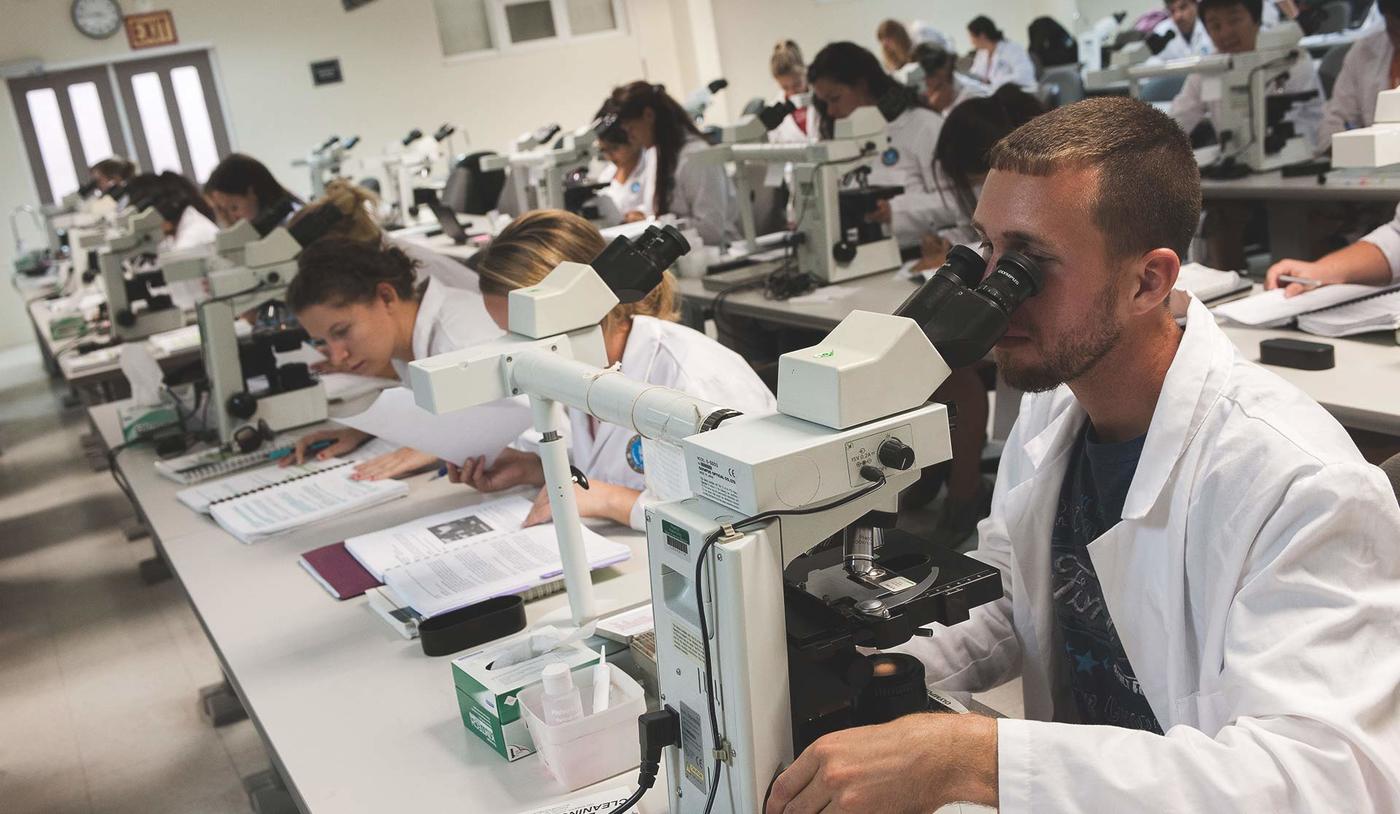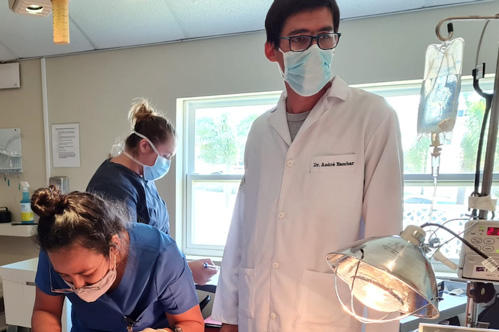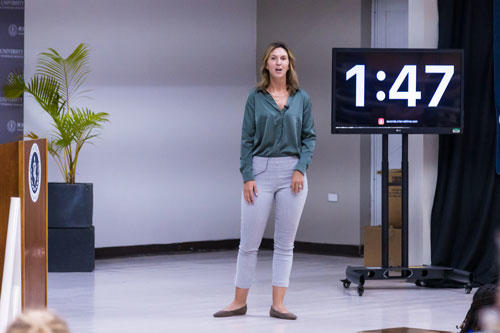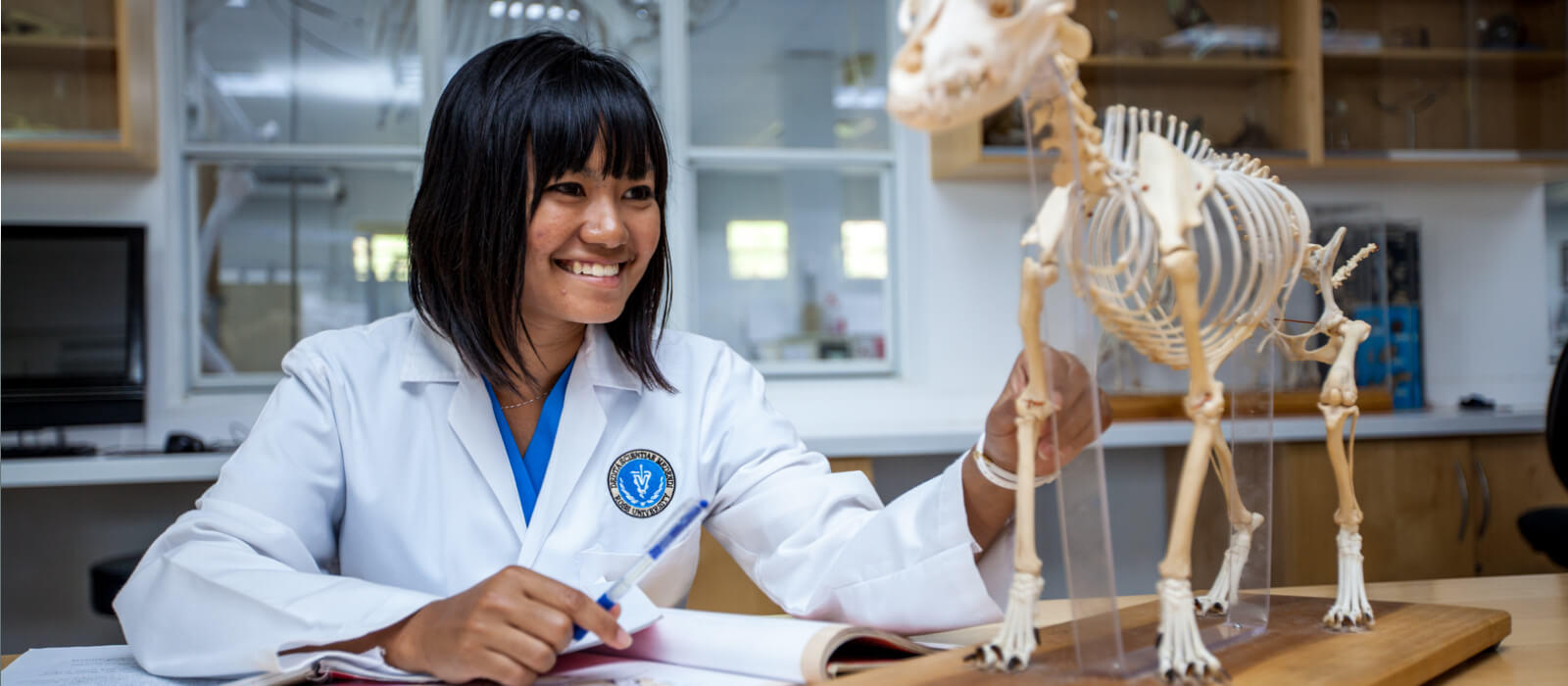Like a growing number of scientists in the field of conservation medicine, Ms. Agostini, a third semester Integrated DVM/Masters student, believes it is nearly impossible to responsibly study animal population management without understanding its relationship with humans. To explore this interplay in St. Kitts, Ms. Agostini is working with her advisor Dr. Luis Cruz-Martinez, assistant professor of veterinary medicine at RUSVM, to delve into community members’ and tourists’ attitudes, knowledge, and actions toward mongooses, a non-native species that is threatening the island’s wildlife and ecosystems.
“The social dimension of these kinds of projects is becoming more widely recognized in literature as being vital to their success, especially when trapping or eradication is involved,” explains Ms. Agostini. Community involvement can help to prevent the kinds of misunderstandings that can often derail a project and instead generate a sense of empowerment and shared responsibility.
Why the mongoose?
Ms. Agostini and Dr. Cruz chose to focus on mongooses because of the animal’s complex role and history in St. Kitts and neighboring islands.
Mongooses, a carnivorous mammal, were brought to the Caribbean from India in the mid-1800s in an effort to control the rat population that was invading the islands’ valuable sugar cane. 1 But because mongooses sleep at night when rats are awake, instead of dining on the rodents the mongooses ended up feasting on native wildlife, particularly ground nesting birds. And because the mongoose has no natural predators its population increased unabated, making these small bushy-tailed creatures an invasive species.
Scientists on a number of islands are taking steps to save the local ecosystems from the mongoose. Although no such projects are currently underway in St. Kitts, it is likely one might be needed in the future says Ms. Agostini. “If that happens this project will provide a baseline method for gaining public support.”
So far, Ms. Agostini has surveyed 100 Kittitians and 100 tourists. Although she has just begun to analyze the data, she says she has already gained a wealth of knowledge about their perspectives.
She discovered, for example, that due to popular literature’s depiction of the mongoose as a cobra fighter (think “Rikki-Tikki-Tavi”), older generations of Kittitians believe they were brought to the island to kill venomous snakes – not rats. “People have an underlying fear of snakes on the island and they like the mongooses because they appreciate the service they provide,” she says. This kind of information will be vital for conservationists to consider before taking steps toward any kind of mongoose control.
Outside her comfort zone
To gather her data, Ms. Agostini created a short online survey and a video explaining the history of mongooses in St. Kitts and providing background on two methods of animal control: a lethal method and a nonlethal method. She uploaded both onto her iPad® and walked up to people on the peninsula side of St. Kitts, where Dr. Cruz traps and studies mongooses’ biology and ecology and there is a local farmer’s market and buzzing tourist industry.
She was met with some skepticism at first, as it is unusual for people in St. Kitts to be approached and questioned by a foreigner with an iPad. Over time, however, people became intrigued by her as word spread that she was a student doing research and was interested in their thoughts and opinions.
Conducting spontaneous face-to-face interviews “is definitely stepping outside the comfort zone for any veterinarian,” observes Dr. Cruz, who adds that they consulted with a social scientist from the University of Michigan to develop their method.
When surveying tourists, Ms. Agostini showed people a picture of a mongoose and asked simple questions such as “Do you know what kind of animal this is?” and “Do you think they’re cute?” to assess their knowledge and attitudes. Next she showed them her video and asked whether they think mongooses need to be controlled in given situations (e.g., if they were carrying disease, if they were threatening farmland, or if they were threatening endangered species), and if so, which method of control the tourists would support.
Because Kittitians have more experience with mongooses, Ms. Agostini asked them additional questions and gathered more specific data. She then showed them the same video she showed the tourists and posed the same queries about mongoose control.
“The survey is less than 10 minutes long, but each interview with locals turned into a 20- to 30-minute conversation because they wanted to chat afterward,” Ms. Agostini says. “That allowed me to make great connections and learn a lot about the culture of St. Kitts.”
Ideally, this new understanding will have far reaching implications, says Dr. Cruz. “St. Kitts is like an outdoor laboratory”. Investigations here have the potential to influence eradication projects throughout the entire Caribbean region. This is a starting point that has a very promising future.”
1https://www.nytimes.com/1990/11/18/travel/climbing-a-st-kitts-volcano.html







